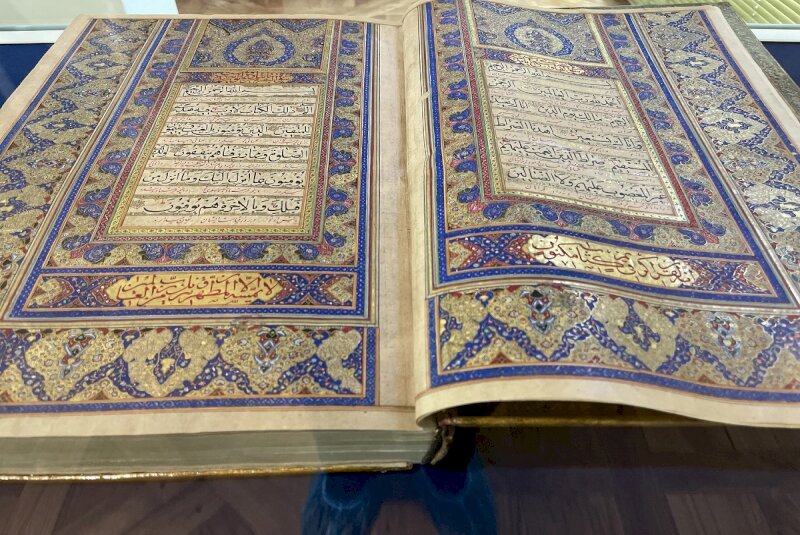Folios of rare Quran manuscripts on view at Niavaran complex

TEHRAN – Folios of nine rare Quran manuscripts have been put on show in an exhibition at the Niavaran Cultural Historical Complex in northern Tehran.
The exhibit presents a variety of Quranic calligraphy in addition to the other related arts of illumination and bookbinding that were highly practiced between the 10th to 13th centuries AH ( 16th to 19th centuries CE).
The show will be running until the end of the holy month of Ramadan which falls on May 1, CHTN reported.
According to Iranica, the writing system in use in Persia since early Islamic times grew out of the Arabic alphabet.
“Comparison of some of the scripts developed on Persian soil, particularly Persian-style Kufic with the Pahlavi and Avestan scripts, reveals a number of similarities between them, and this has led certain modern researchers to surmise that when the Persians adopted the Arabic writing system, they may have made changes in the letter shapes and style of writing under the influence of their old national scripts and inherited tastes.”
“Distinctive Persian features appear mainly in the taliq, shekasteh-taliq, nastaliq and shekasteh-nastaliq scripts,” the encyclopedia mentions.
The Niavaran Cultural-Historical Complex, covering an area of about eleven hectares, is composed of several landmark buildings, museums, and monuments constructed in the 19th and 20th centuries during the Pahlavi and late Qajar eras.
The history of the palace complex stretches back to about 280 years ago when Fath-Ali Shah of the Qajar Dynasty ordered a summer residence to be built over the then countryside area of the capital. The two-story Ahmad Shahi Pavilion is one of the highlights of the complex.
AFM
Leave a Comment